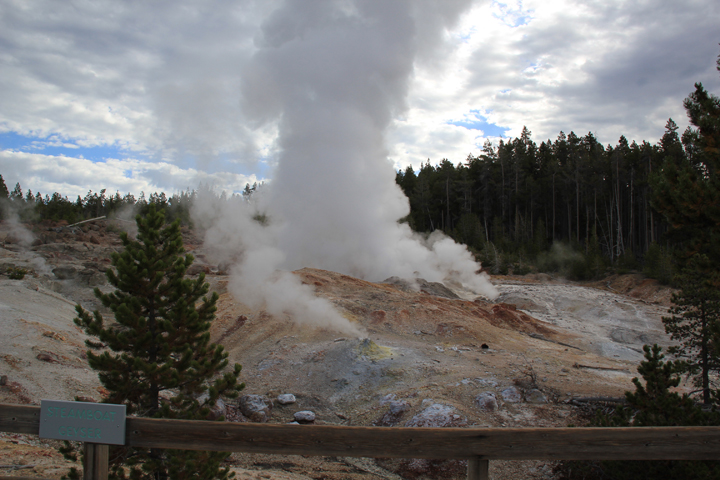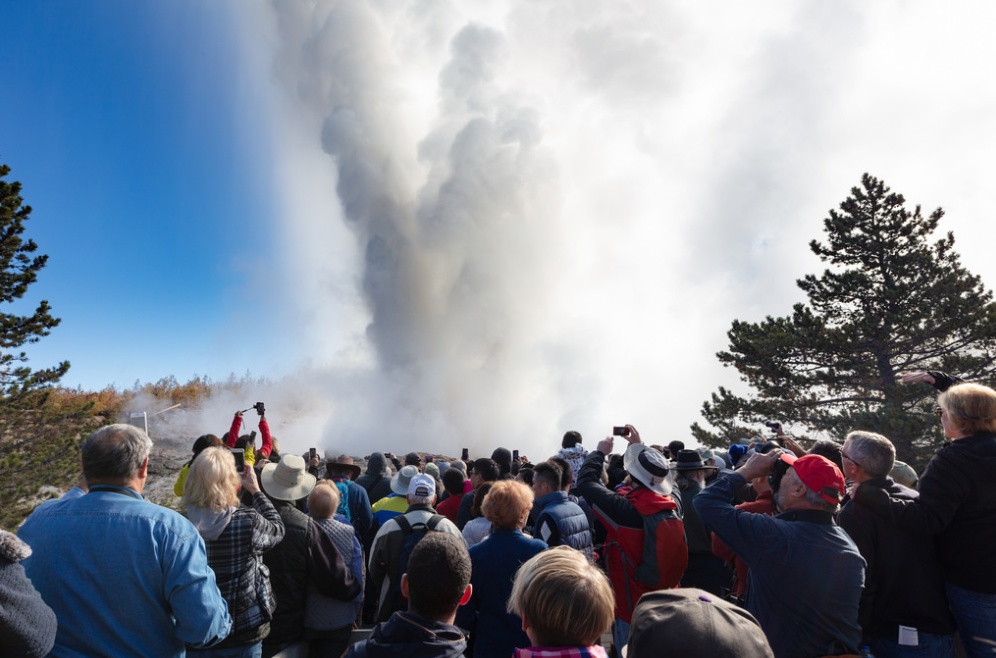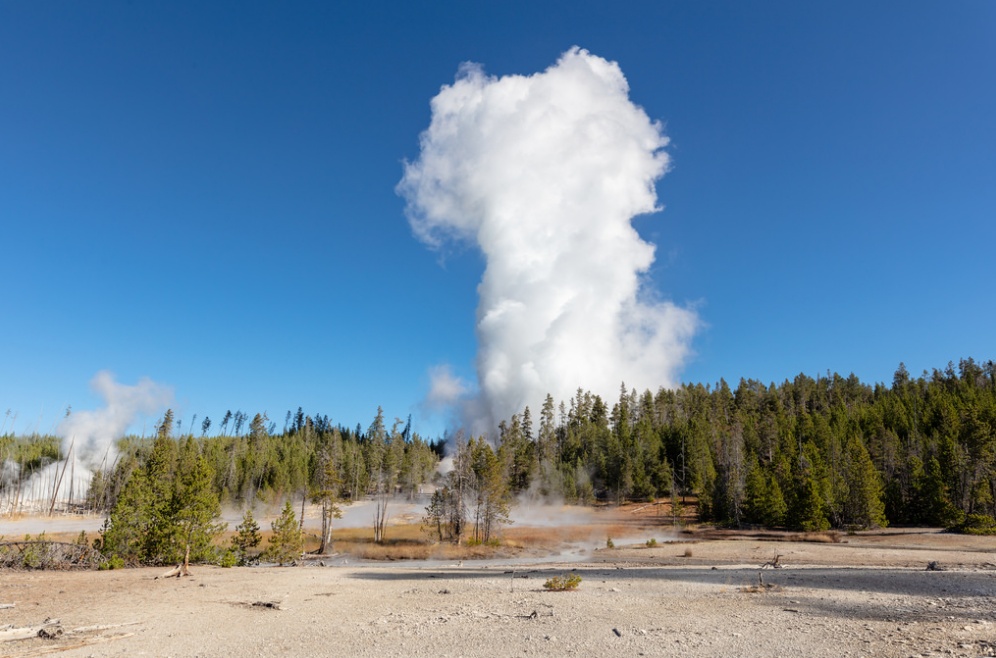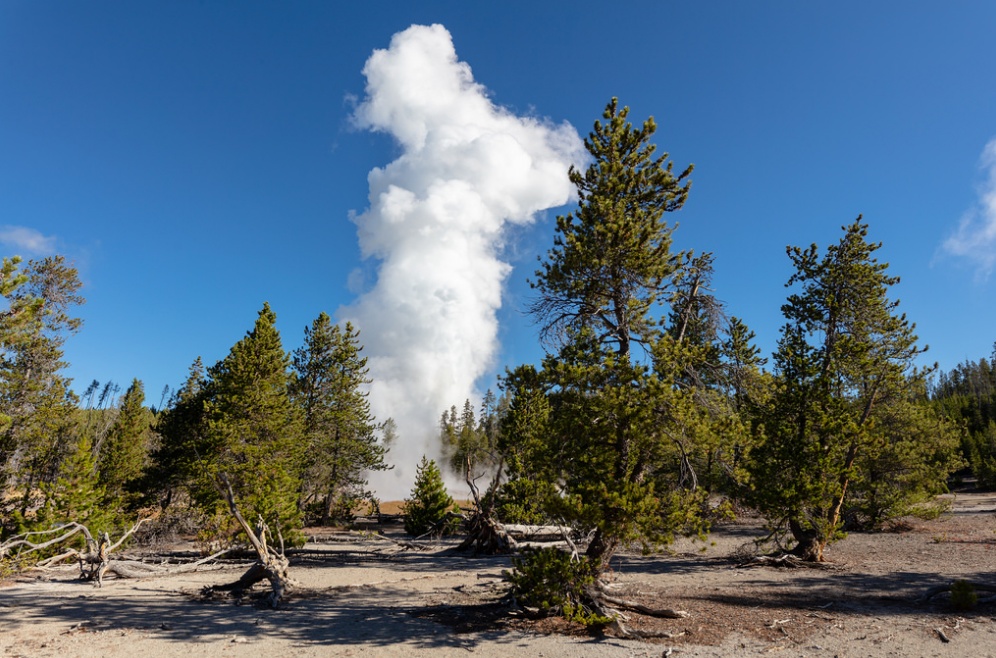Yellowstone’s Steamboat Geyser smashes previous record of eruptions for a calendar year

Yellowstone's Steamboat Geyser kept up its increased activity in December 2019, with water eruptions on 8th, 18th, and 26th. This brings the total number of eruptions for 2019 to 48 and smashes the previous record of eruptions for a calendar year set in 2018 with 32 eruptions.
The geyser appears to have entered a phase of more frequent water eruptions, much like it did in the 1960s and early 1980s.
Overall, 2019 was a year of diminished seismicity at Yellowstone volcano, with 1 217 located earthquakes. This is well below the annual average of 1 500 – 2 500 earthquakes – and 7 events greater than M3, the Yellowstone Volcano Observatory reports.
For the first time in several years, there was no significant uplift in the Yellowstone area during 2019, YVO said. The caldera continued to subside, as it has since 2015, and the area around Norris Geyser Basin transitioned from no deformation to subsidence in September 2019.
The University of Utah Seismograph Stations located 87 earthquakes in the Yellowstone National Park region during December. The largest event was a minor earthquake of magnitude 3.5 located 16 km (10 miles) south of West Yellowstone, MT, at 12:32 UTC on December 15. This event was reported felt in Island Park, ID, and surrounding areas.
No swarm activity was observed — earthquake activity remains at background levels.
Ground deformation in the Yellowstone area has been variable but minor over the last few months.
Overall subsidence of Yellowstone caldera is indicated by GPS stations on both the Sour Creek and Mallard Lake resurgent domes, with about 2 cm (0.8 inches) of subsidence during 2019. In the area of Norris Geyser Basin, GPS data show subsidence of about 2.5 cm (1 inch) since September.



Steamboat Geyser eruption on September 17, 2018. Credit: USGS/YVO
Geological summary
The Yellowstone Plateau volcanic field developed through three volcanic cycles spanning two million years that included some of the world's largest known eruptions. Eruption of the >2 450 km3 (588 mi3) Huckleberry Ridge Tuff about 2.1 million years ago created the more than 75-km-long (46 miles) Island Park caldera. The second cycle concluded with the eruption of the Mesa Falls Tuff around 1.3 million years ago, forming the 16-km-wide (9.9 miles) Henrys Fork caldera at the western end of the first caldera.
Activity subsequently shifted to the present Yellowstone Plateau and culminated 640 000 years ago with the eruption of the >1 000 km3 (239 mi3) Lava Creek Tuff and the formation of the present 45 x 85 km (28 x 52 miles) caldera. Resurgent doming subsequently occurred at both the NE and SW sides of the caldera and voluminous (1000 km3) intracaldera rhyolitic lava flows were erupted between 150 000 and 70 000 years ago. No magmatic eruptions have occurred since the late Pleistocene, but large hydrothermal eruptions took place near Yellowstone Lake during the Holocene. Yellowstone is presently the site of one of the world's largest hydrothermal systems including Earth's largest concentration of geysers. (GVP)
Featured image credit: USGS/YVO

Commenting rules and guidelines
We value the thoughts and opinions of our readers and welcome healthy discussions on our website. In order to maintain a respectful and positive community, we ask that all commenters follow these rules.